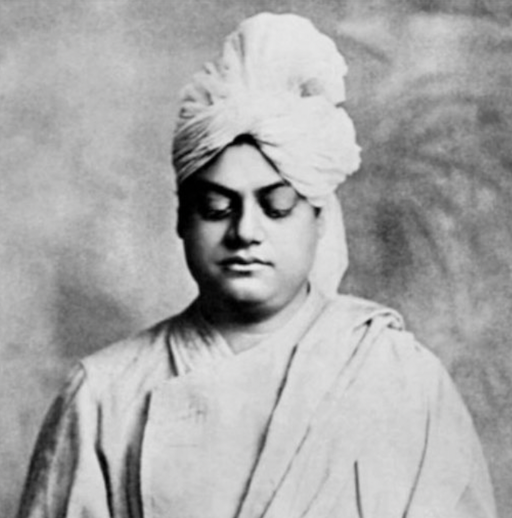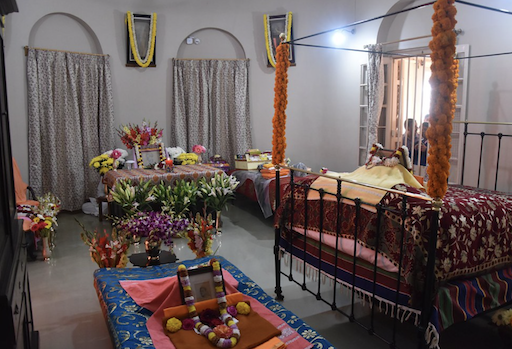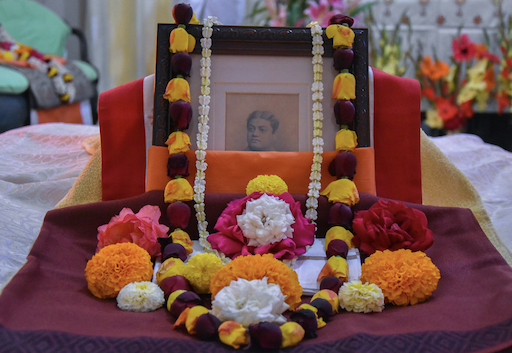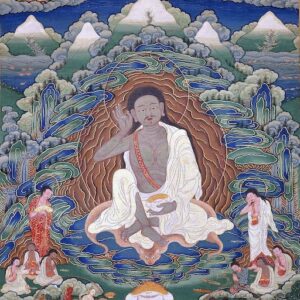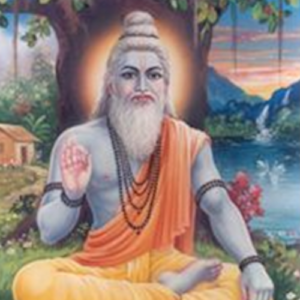This is a room of Swami Vivekananda at Belur Math. The math also contains the temples with remains of Sri Ramakrishna, Sri Sarada Devi, Swami Vivekananada & other disciples of Sri Ramakrishna.
There is a place to sit and meditate. You can go into meditative states here effortlessly.
How to Get there
The temple is located 300 m East of Belur math station.
Map:
https://maps.app.goo.gl/XgHdwo4DX9n4krF28
About Swami Vivekananda Room
Here lived the great sage who Sri Ramakrishna said was a ‘Dhyana Siddha (perfect in meditation) even from the very birth’. During Swamiji’s time the room must have been less cluttered than it appears today with many pieces of furniture and miscellaneous things. Swamiji was a man without frontiers and would have liked to live and move like free air. We can imagine him in a spacious room with bare minimum furniture, sitting quietly or meditating, or being absorbed in the scenic beauty of the Ganga. The fact is that many things in this room were later additions. As days went by, things used by Swamiji at different places were received at Belur Math and began to accumulate in his room for want of a better place.
Swamiji loved his room and was always glad to be back in it after his travels, and even after a short visit to Kolkata. In this room he wrote, gave instructions to his brother-monks and disciples, received his friends, had his meal, slept, and communed with God. And in this very room he gave up his body in final meditation.
About Swami Vivekananda
Swami Vivekananda, known in his pre-monastic life as Narendra Nath Datta, was born in an affluent family in Kolkata on 12 January 1863. His father, Vishwanath Datta, was a successful attorney with interests in a wide range of subjects, and his mother, Bhuvaneshwari Devi, was endowed with deep devotion, strong character and other qualities. A precocious boy, Narendra excelled in music, gymnastics and studies. By the time he graduated from Calcutta University, he had acquired a vast knowledge of different subjects, especially Western philosophy and history. Born with a yogic temperament, he used to practise meditation even from his boyhood, and was associated with Brahmo Movement for some time.
With Sri Ramakrishna
At the threshold of youth Narendra had to pass through a period of spiritual crisis when he was assailed by doubts about the existence of God. It was at that time he first heard about Sri Ramakrishna from one of his English professors at college. One day in November 1881, Narendra went to meet Sri Ramakrishna who was staying at the Kali Temple in Dakshineshwar. He straightaway asked the Master a question which he had put to several others but had received no satisfactory answer: “Sir, have you seen God?” Without a moment’s hesitation, Sri Ramakrishna replied: “Yes, I have. I see Him as clearly as I see you, only in a much intenser sense.”
Apart from removing doubts from the mind of Narendra, Sri Ramakrishna won him over through his pure, unselfish love. Thus began a guru-disciple relationship which is quite unique in the history of spiritual masters. Narendra now became a frequent visitor to Dakshineshwar and, under the guidance of the Master, made rapid strides on the spiritual path. At Dakshineshwar, Narendra also met several young men who were devoted to Sri Ramakrishna, and they all became close friends.
Difficult Situations
After a few years two events took place which caused Narendra considerable distress. One was the sudden death of his father in 1884. This left the family penniless, and Narendra had to bear the burden of supporting his mother, brothers and sisters. The second event was the illness of Sri Ramakrishna which was diagnosed to be cancer of the throat. In September 1885 Sri Ramakrishna was moved to a house at Shyampukur, and a few months later to a rented villa at Cossipore. In these two places the young disciples nursed the Master with devoted care. In spite of poverty at home and inability to find a job for himself, Narendra joined the group as its leader.
Beginnings of a Monastic Brotherhood
Sri Ramakrishna instilled in these young men the spirit of renunciation and brotherly love for one another. One day he distributed ochre robes among them and sent them out to beg food. In this way he himself laid the foundation for a new monastic order. He gave specific instructions to Narendra about the formation of the new monastic Order. In the small hours of 16 August 1886 Sri Ramakrishna gave up his mortal body.
After the Master’s passing, fifteen of his young disciples (one more joined them later) began to live together in a dilapidated building at Baranagar in North Kolkata. Under the leadership of Narendra, they formed a new monastic brotherhood, and in 1887 they took the formal vows of sannyasa, thereby assuming new names. Narendra now became Swami Vivekananda (although this name was actually assumed much later.)
Read More:
